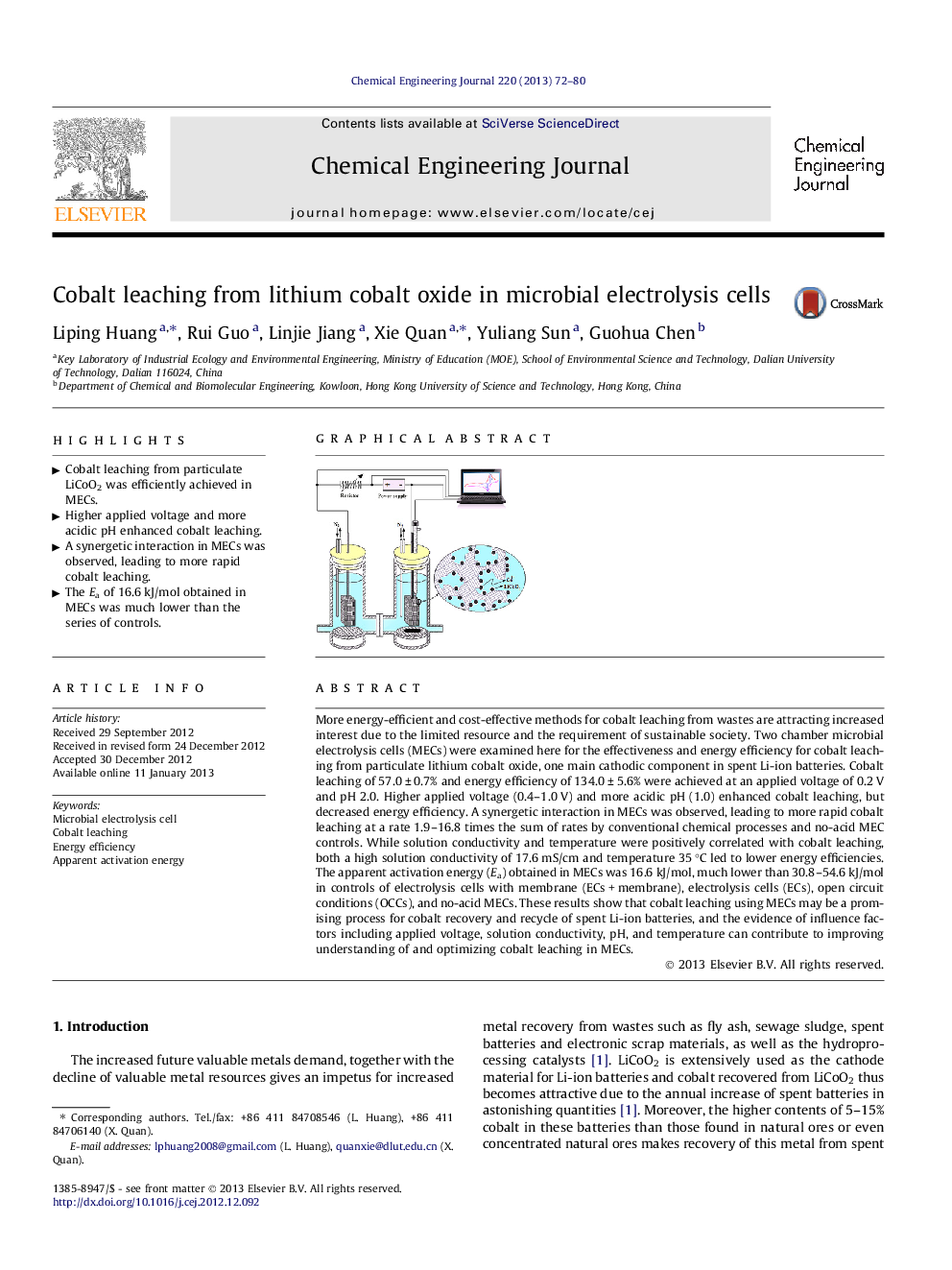| Article ID | Journal | Published Year | Pages | File Type |
|---|---|---|---|---|
| 148611 | Chemical Engineering Journal | 2013 | 9 Pages |
More energy-efficient and cost-effective methods for cobalt leaching from wastes are attracting increased interest due to the limited resource and the requirement of sustainable society. Two chamber microbial electrolysis cells (MECs) were examined here for the effectiveness and energy efficiency for cobalt leaching from particulate lithium cobalt oxide, one main cathodic component in spent Li-ion batteries. Cobalt leaching of 57.0 ± 0.7% and energy efficiency of 134.0 ± 5.6% were achieved at an applied voltage of 0.2 V and pH 2.0. Higher applied voltage (0.4–1.0 V) and more acidic pH (1.0) enhanced cobalt leaching, but decreased energy efficiency. A synergetic interaction in MECs was observed, leading to more rapid cobalt leaching at a rate 1.9–16.8 times the sum of rates by conventional chemical processes and no-acid MEC controls. While solution conductivity and temperature were positively correlated with cobalt leaching, both a high solution conductivity of 17.6 mS/cm and temperature 35 °C led to lower energy efficiencies. The apparent activation energy (Ea) obtained in MECs was 16.6 kJ/mol, much lower than 30.8–54.6 kJ/mol in controls of electrolysis cells with membrane (ECs + membrane), electrolysis cells (ECs), open circuit conditions (OCCs), and no-acid MECs. These results show that cobalt leaching using MECs may be a promising process for cobalt recovery and recycle of spent Li-ion batteries, and the evidence of influence factors including applied voltage, solution conductivity, pH, and temperature can contribute to improving understanding of and optimizing cobalt leaching in MECs.
Graphical abstractFigure optionsDownload full-size imageDownload as PowerPoint slideHighlights► Cobalt leaching from particulate LiCoO2 was efficiently achieved in MECs. ► Higher applied voltage and more acidic pH enhanced cobalt leaching. ► A synergetic interaction in MECs was observed, leading to more rapid cobalt leaching. ► The Ea of 16.6 kJ/mol obtained in MECs was much lower than the series of controls.
